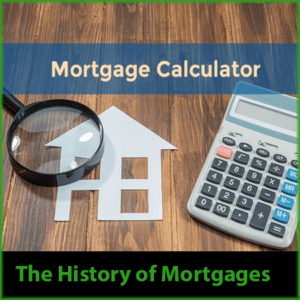The History of Mortgages
Early Beginnings: A long time ago, before the government got involved, mortgages were managed by building and loan associations (B&Ls). These were groups where people would save money by buying shares. To get a loan, a person had to buy shares in the association, and slowly pay into it. For example, if someone needed $1,000, they would buy shares worth $200 each. These systems were often complicated and could lead to financial problems when they failed.
were groups where people would save money by buying shares. To get a loan, a person had to buy shares in the association, and slowly pay into it. For example, if someone needed $1,000, they would buy shares worth $200 each. These systems were often complicated and could lead to financial problems when they failed.
Mortgage-Backed Securities (MBS) Come Into Play: As more people wanted to build homes, private mortgage companies created mortgage-backed securities (MBS). These were a way to bundle home loans into bonds that could be sold to investors. One of the first companies to do this was the United States Mortgage Company, which started in 1871. They figured out how to use home loans to create bonds that could raise money for more home loans.
Government Gets Involved: The Great Depression led to the government stepping in to help. They created the Home Owners’ Loan Corporation (HOLC) to make home loans easier. One of their big ideas was the 15-year loan, which made payments more manageable. However, their system was also linked to “redlining,” where certain neighborhoods were unfairly treated when it came to loans.
After World War II: After World War II, Fannie Mae was created to buy government-backed loans from banks. This helped make it easier for more people to buy homes. Fannie Mae’s goal was to provide money to banks by buying loans, which kept the mortgage system running smoothly.
S&L Crisis: In the 1980s, the Savings and Loan (S&L) crisis happened. This was because banks took on too many risks after the government reduced some rules. Interest rates went up, and many S&L institutions couldn’t handle it. The government had to step in with bailouts to keep things from getting worse.
The 2008 Financial Crisis: In the 2000s, a lot of risky loans were bundled together and sold as mortgage-backed securities. These risky loans were a big part of the 2008 financial crisis. Fannie Mae had helped make mortgages easier for people, but it ended up creating problems with too many complicated loans. A Fannie Mae executive said, “This system was built for simple loans, but we pushed through too many complicated ones.”
What is a Mortgage? A mortgage is simply a loan that a person takes to buy a house or property. The house is used as “collateral,” meaning that if the borrower can’t repay, the lender can take the house. Mortgages are made up of:
the borrower can’t repay, the lender can take the house. Mortgages are made up of:
- Principal: The amount of money borrowed.
- Interest: The extra money you pay to borrow.
- Amortization: Paying back the loan over time.
- Foreclosure: When the lender takes the house because the borrower can’t pay.
Types of Mortgages:
- Fixed-Rate Mortgages (FRM): The interest rate stays the same throughout the loan.
- Adjustable-Rate Mortgages (ARM): The interest rate can change based on the market.
- Interest-Only Mortgages: For a time, you only pay the interest, not the loan itself.
- Reverse Mortgages: Mainly for older homeowners, where the loan balance increases over time instead of being paid off.
What Affects Mortgage Terms?
- Loan-to-Value Ratio (LTV): This shows how much the loan is compared to the value of the house. A higher LTV means more risk.
- Down Payment: The money you pay upfront when buying the house.
- Credit Check: The lender checks your credit to see if you’re financially stable.
- Property Appraisals: The house must be valued to make sure the loan amount is reasonable.
Different Countries, Different Rules:
- United States: The government plays a big role, with companies like Fannie Mae helping people buy homes.
- Canada: Canada has strict rules, and most people get 5-year fixed-rate mortgages.
- United Kingdom: Building societies are popular, and loans often have variable rates.
- Europe: Some countries use fixed-rate mortgages, while others use adjustable-rate ones.
- Islamic Countries: Mortgages are based on shared equity models instead of interest.
Mortgages and English Law: In the past, lenders used to just take land if the borrower couldn’t pay. Over time, the courts added rules to protect the borrower. One of these rules is the equity of redemption, which gives the borrower the right to get the property back if they repay the loan.
Canadian military mortgage brokers specialize in helping current and former military members secure home loans that cater to their unique needs. These brokers understand the challenges military personnel face, such as frequent relocations and unpredictable posting schedules, and work to find flexible mortgage solutions. They are well-versed in the specific benefits and programs available to veterans and active service members, like the Canadian Forces Mortgage Program, which offers special terms and conditions. By offering expert guidance and access to various lenders, military mortgage brokers ensure that military families can find affordable and stable housing options, even in the face of the uncertainties that come with a military career.
Conclusion: Mortgages have changed a lot over the years. From simple share accounts to complicated financial products, mortgages help people buy homes but also come with risks. Understanding how mortgages work is important for anyone thinking of borrowing money to buy property.